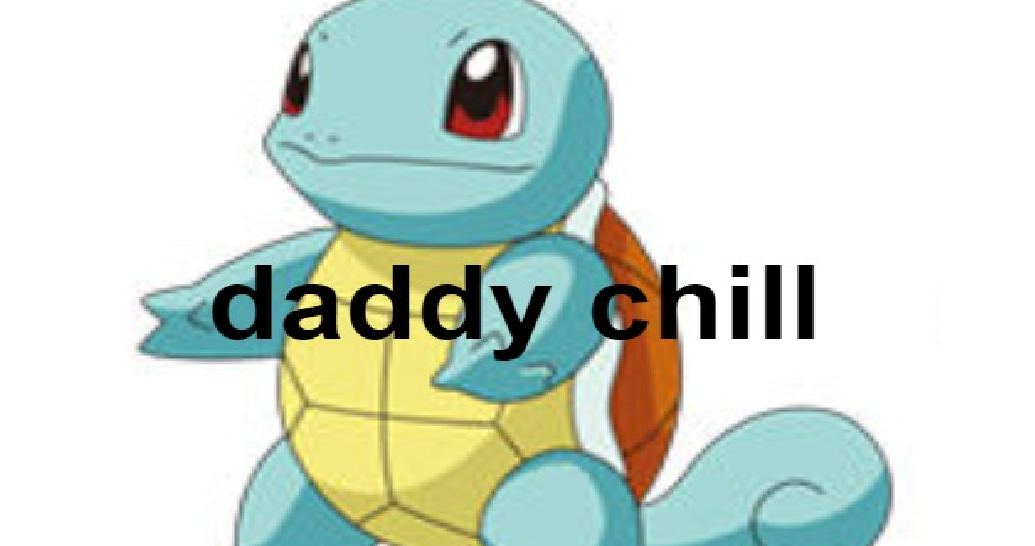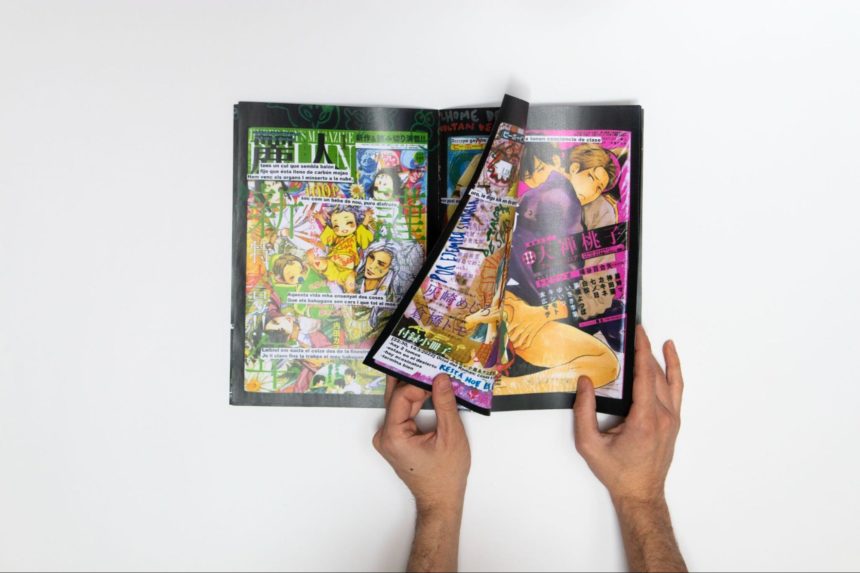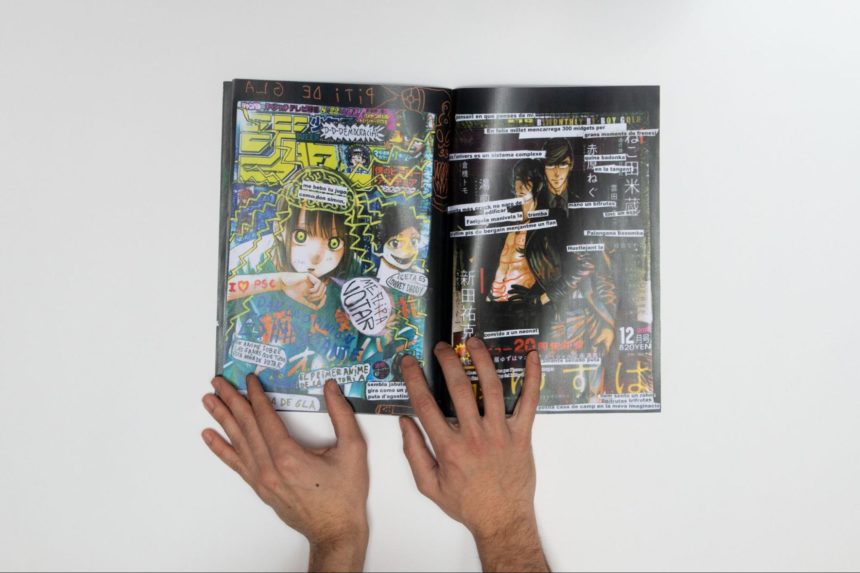‘How to do it lowkey’ shows a sensorial disposition embraced by the ethnographer in a research about internet vernacular creativity and digital folklore. This ironic, playful, informal and chilled disposition allows the ethnographer to participate in the creative environment in which a group of friends create and share surreal memes. This field device was developed to delve into the tensions between playing and working and to attend to the links between irony, informality and embodied knowledge in a meme-making community of practice.
FILE CARD
Field device: Sensorial disposition.
Mode of inquiry: Participant observation, playfulness, meme-making.
Ethnographic counterparts: meme-makers, shitposters and deep internet users.
Resources: PhD grant.
Degree of difficulty: Ec.
‘the point is to do it lowkey’

go ahead
so yes
the point is to do it lowkey
so as not to overwhelm
What is lowkey?
Hahahaha
not putting too much pressure on, i guess
Okkk
Perfeect
I reduce my professional pressures
Hahahahahaah
yeaah i don’t know
it’s weird you’ll see the vibe
but in any case they are in
– Translation of the chat.
The Urban Dictionary, an inaccurate, unreliable and very useful online collaborative dictionary that collects slang, jargon and jokes expressed as definitions, defines ‘lowkey’ as follows:
Lowkey: The dictionary recognized word “low-key” is an adjective that means, according to Merriam Webster: 1) quiet and relaxed: not very forceful, emotional or noticeable; 2) of low intensity: restrained.
The slang variant of low-key (often written without the hyphen as lowkey) functions as an adverb. Lowkey is typically used to describe a speaker’s desires or emotions. Lowkey retains the dictionary definition’s meaning of “of low intensity” and “not very emotional.” However, additionally, it can also indicate something that is secretly (perhaps somewhat shamefully) wanted or felt by the speaker.
In short, lowkey is used to describe a speaker’s thoughts, feelings, and desires, and it means: 1) moderately: of low emotional intensity; 2) secretly.
The opposite of lowkey is highkey.
I lowkey wanna eat an entire cake.
I highkey wanna eat healthy, but lowkey wanna to eat an entire cake.
I am lowkey in love with Kevin Spacey.
by tinkertayler April 19, 2016
2148 Likes 182 Dislikes
At the beginning of my fieldwork with meme-makers and shitposters[1], I discovered @atractive.smithers, a fascinating Instagram meme account. Through P., a friend and member of the group, I found out that the content of this account came out from a whatsapp group of 28 people engaged in a frenetic shitposting activity. I wanted to meet them to propose to them to participate in my research about digital folklore, thinking about some dynamics to join research together, such as a shared artistic residency or an exhibition project. I talked to P. to meet up one day and bring my proposal to the group. He talked to the others and told me that they were in but that I should not overwhelm them, that I should do it lowkey.
A week later, I went to P.’s studio and found 5 dudes in their 20s smoking joints, drinking weird brand beers and apple vodka, listening to some lo-fi and playing with mangas and graffiti sprays. They were editing some zines that they would use as merchandising for their hyperpop/trap band’s, named Els Cundits. P. had scanned from a geeky comic book store a bunch of rare manga covers, he had made copies and they were intervening them with printed messages from the whatsapp group. Random jokes about Pokemons, the Simpsons, bitches, Magic the Gathering, beans, Puigdemont, democracy and ass-eating.
Everyone smoked and laughed continuously at private, absurd and many times incomprehensible jokes. I didn’t want to disturb the joking and spliffing mood by bringing a work-related proposal to the table, so I delayed the moment until we had already left the studio for a hamburger dinner. When I told them about my research on Internet vernacular creativity and offered to collaborate on a creative project linked to an art center, they were intrigued by the idea but also reluctant. M. said repeatedly that he could not commit himself, that his job was already taking up too much of his time and that he did not want to work anymore, that he understood very clearly that everything related to the IG account and the group was his leisure time and he did not want to turn it into a series of commitments and work demands. Some of them did not understand why I wanted to do research with them as they only fool around among friends. Although I emphasized that it would be an open and playful process and that everyone would be free to do what they wanted to do, the weight of the research made them uncomfortable and lazy. C. told me that I must join the Whatsapp group before and get to know the stuff and the codes and see how they do it.
That moment was critical in the way I would approach the field. My idea of generating collaborative processes, using my relationship with some art centers to be able to have spaces, funding or exhibition venues was not welcomed. What I felt I could “give” to my counterparts was not what they wanted. Through being in the whatsapp group I was discovering that the space in which this community developed their creative games of meme-making and shitposting was an underground space that could not be approached with professionalizing or “salvage accumulation” (Tsing, 2017) proposals.
Their creation of memes and digital folkloric content develops as a game, a constant improvisation located in a liminal space, opposed to the world of seriousness, deepness and work. This playspace is constructed through irony and absurdity as a place outside of the logics and values that operate in institutional spaces, in the Art world or in Academia. In this way I am learning to have that lowkey, playful disposition, relaxed, liquid, which does not give so much importance to things, in order to be able to approach participant observation.
At the time I write this article, a year of fieldwork later, I can say that I am following P.’s advice by applying it to the entire research process, making it lowkey, from field relations to writing. The lowkey disposition has become a field device in my ethnographic investigation of Internet vernacular creativity, that is, a device that grows out of the ethnographic situation to devise the dispositions for ethnographic relations (Criado and Estalella, 2023). A relaxed, ironic and informal disposition with which I face fieldwork and writing, trying to lower academic pressures in order to generate and communicate this folkloric environment of lowered expectations, playfulness and continuous improvisation.
This field device is not an specific and precise way of writing or performing in the field, nor a design of any action, but a disposition, a trained attitude that reveals itself in ways of being, of writing, of speaking. Criado and Estalella (2023: 12-13) tells about a meaning for the concept of disposition that draws on Bourdieu’s understanding of disposition as an inclination constitutive of habitus. The device I am showing here is a mode of attention in the field in this meaning, as a poetic disposition that lends to sensory richness, being aware of subtle irony and allowing leisure spaces to be created in which vernacular creativity, born out from boredom or weed high could flourish. During my fieldwork I learned that I can not bring the hardness of academia and formal research to a boy’s club of partying, irony and weed. By embracing this lowkey disposition, the research process was transformed, opening up to the ways and moods of the field and enabling me to notice what is relevant.
‘I lowkey just fell…never speak of this’
There is another definition of lowkey in UrbanDictionary, ranked number 3 on the top list, which explains the concept in a different way:
Lowkey: to know something but keep it down low so it’s not a big deal
I lowkey just fell…never speak of this
by Mr. Grinch November 28, 2018
85 likes 25 dislikes
This definition reveals another important aspect of the lowkey disposition as a field device in an ethnography on digital folklore. When conducting interviews during fieldwork I tried to delve into the creative processes of certain vernacular creations such as memes and other ironic and improvised artifacts, pretending to recreate and trace them. Faced with these questions, many partners felt uncomfortable or disoriented and most did not respond due to laziness, disinterest or forgetfulness. This discomfort in recreating and reconstructing the creative process tells us something about the type of knowledge and creative processes that are deployed in these exercises of vernacular creativity. Talking about the works in the past tense, reconstructing their creation or revealing their meanings, generated constant laughter because of the formal tone that the narration of some of these absurd and playful works took on.
One of my partners said that in her descriptions of the things she made (memes, fanzines…), she tried to sound as unserious as possible, so as not to exalt too much or give too much importance to her work as if it were an art object. This refusal to talk too much about the things that one makes in order not to give the impression that they are artistic objects frames the lowkey attitude in a more general rejection of the discourses and values of Art. The highkey nature of the discourses in the art world and the dynamics of professional art are confronted by this lowkey attitude of folkloric and leisurely creativity.
Why did recreating creative processes generate a discomfort similar to talking about work or proposing processes related to the art world? The answer to this question is linked to the categories and processes of valorization that operate in this space of digital folklore. This creative space of memes and shitposting refuses labor dynamics, as well as value categories associated with the art world, such as individual authorship, geniality, originality or deepness. Giving too much importance to a meme or a joke (talking about it, analyzing it, exhibiting it) is an annoying and uncomfortable attitude because it disrupts the playfulness and the improvisation. Likewise, recreating the creative process by looking towards it implies creating a product, giving a solid structure and a univocal meaning to improvised practices.
Only when we look back, searching for antecedents for new things, do ideas appear as the spontaneous creations of an isolated mind encased in a body, rather than way stations along the trails of living beings, moving through a world. (Hallam e Ingold, 2007: 8).
A lowkey disposition in this research does not only entail a chillied by not proposing work dynamics or pressuring and overwhelming, but, at a more general level, not giving so much importance to the creations (the memes, the jokes, the comments…) and that implies, to a certain extent, not talking too much about what is done, keeping a tacit secret regarding the processes and meanings of the memes and other vernacular creations.
This discomfort in telling the processes shows that vernacular knowledge and creativity are not talked about, that these processes are untellable. Pink and Ardévol (2018) in their ethnographic experience with transmedia practices among teenagers, say that the ways in which these practices are learned and practiced are performative and neither textual nor documented. To analyze this sensory or embodied knowledge that is deployed in transmedia practices they developed the concept of an “invisible creativity”. It “refers to the creative and improvisational activities in which teenagers engage in digital materiality (from creating content or searching for information, to sharing and consuming multimedia products) when they are alone, in groups, or connected online with their friends and peers” (Pink y Ardévol, 2018: 123). These types of sensory and embodied practices are the ones that take place in the “communities of practice” of digital folklore. Due to the informal and folkloric (by users for users) nature of these practices, they cannot be verbalized and therefore interviews cannot apprehend them.
Similarly in the online underground (Harper, 2014) there seems to be a tacit agreement not to unveil, define, categorize or narrate creative practices and forms under the idea of “it is not a big deal”. Talking about it by creating narratives, theorizing or searching for deep meanings is understood as a cringe or pretentious act, alien to the very essence of play, randomness, irony and jokes. This idea gives rise to significant new questions about the link between narrating and formalizing; about how the retrospective of creative processes employs romantic logics of creativity (authorship. geniality, originality…); or about the nature of the refusal of defining and verbalizing that is present in online communities of practice.
It is necessary to express that this lowkey attitude is a “deep play” (Geertz, 1973) and entails a commitment to the refusal of formality and deepness. This playful disposition of rejection seriousness is lowkey taken seriously and its reproduction is necessary to create a certain creative environment. The lowkey playfulness is linked to creative dynamics that stimulates collective experimentation over individualistic and professional claims. “Not making a big deal” is a way to reduce individual artistic egos by “anonymizing” creations. A highkey attitude that talks too much about their creations produces an authorship that is the opposite of the collective creative forms of this shitposting and meme-making. As Gabriella Coleman says about 4chan[2], the frenetic activity that pushes posts off the front page very quickly and the anonymity of the users “lowers personal responsibility and encourages experimentation”.

Summing up, my fieldwork has led me to adopt this lowkey disposition in order to generate meaningful encounters and questions. This field device allows me to pose relevant questions that I didn’t have. It was only due to adopting this lowkey attitude, laughing at big deals, that I could understand the link between informality and embodied knowledge; between secrecy and irony; or between anonymity, hyperactivity and playfulness by participating in the creative environment of the field, lowering the artistic expectations and hanging up without any clear purpose.
Doing it lowkey also opens up the possibility for a deep collaboration based on everyday improvisation. Not focusing on the final product of the research leads me to think about other ways of taking field notes, of writing and of thinking actions and prototypes for communicating the research.
Sources
Coleman, Gabriella (2014) Hacker, hoaxer, whistleblower, spy. Verso.
Criado, Tomás and Estalella, Adolfo (2023). The Ethnographic Invention. In Criado, T. and Estalella, A. (eds) An Ethnographic Inventory: Field Devices for Anthropological Inquiry. Routledge.
Geertz, Clifford (1973) Deep Play: Notes on the Balinese Cockfight. In The interpretation of cultures. Basic Books.
Hallam, Elizabeth e Ingold, Tim (2007) Creativity and Cultural Improvisation. Berg.
Harper, Adam (2014) Lo-Fi Aesthetics in Popular Music Discourse. [Doctoral Thesis University of Oxford]
Pink, Sarah y Ardévol, Elisenda (2018) Estrategias etnográficas para revelar prácticas transmedia de los adolescentes en Scolari, C. (ed.) Adolescentes, Medios de comunicación y culturas colaborativas.: H2020 Research and Innovation Actions.
Tsing, A. L. (2017). The mushroom at the end of the world. Princeton University Press.
Notes
[1] In Internet culture, shitposting, trashposting, or funposting is the act of using an online forum or social media page to post content that is satirical and of “aggressively, ironically, and trollishly poor quality” (en.wikipedia.org/wiki/Shitposting) [access 04/02/2022].
[2]4chan is an anonymous English-language image board that is often described as the center of Internet subculture. Its community has influenced the formation and popularisation of prominent internet memes, such as lolcats, Rickrolling, rage comics, wojaks, Pepe the Frog, as well as hacktivist and political movements, such as Anonymous and the alt-right. (en.wikipedia.org/wiki/4chan) [accessed 16/03/2023].



